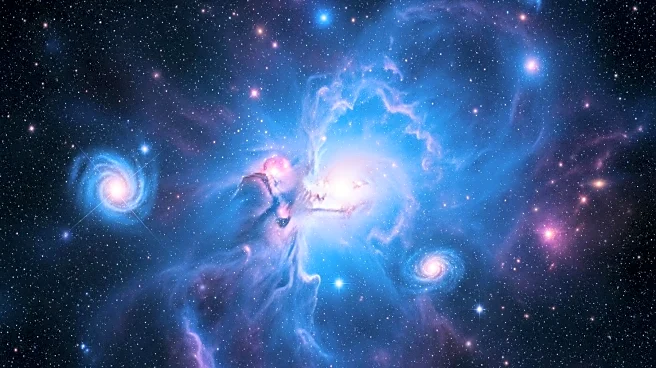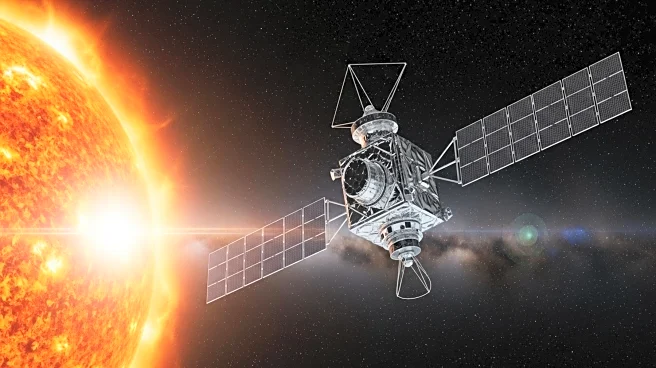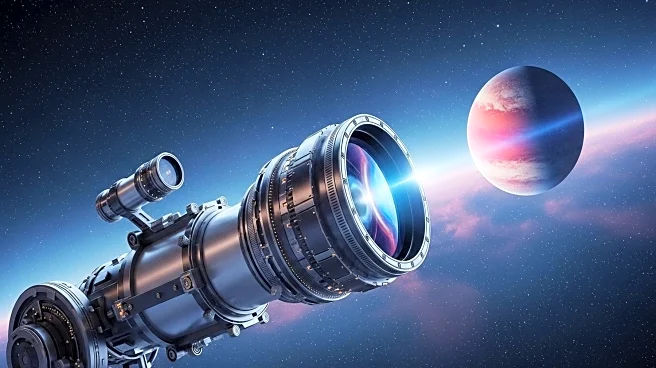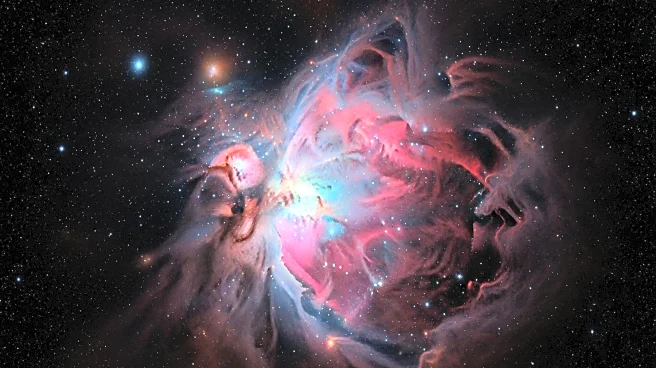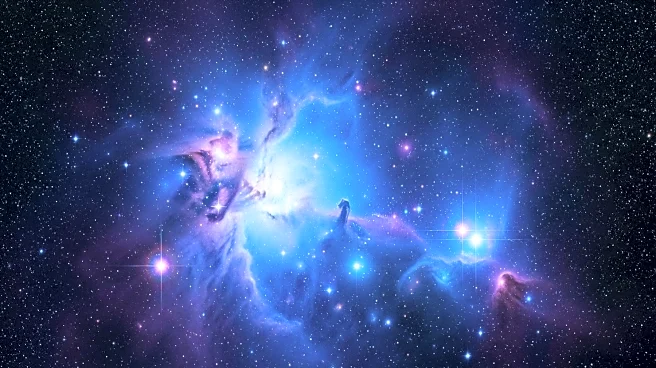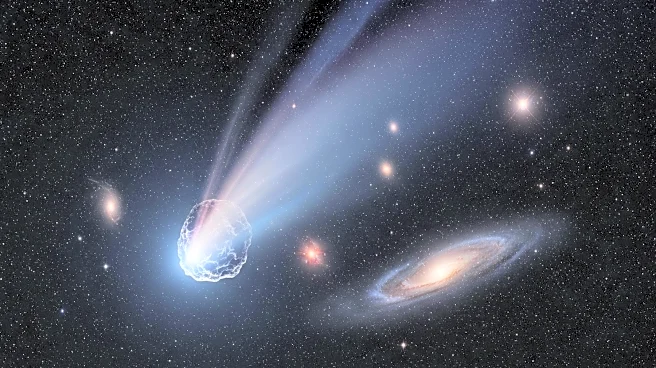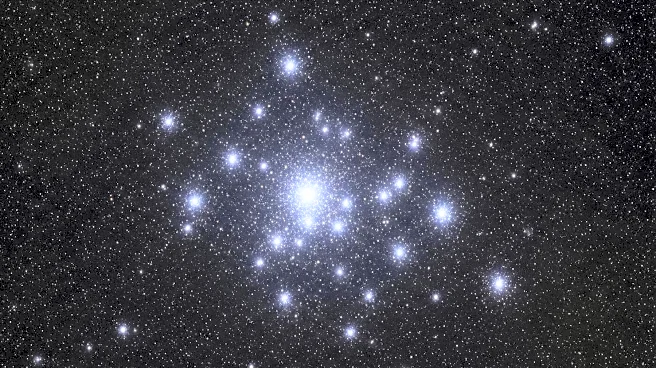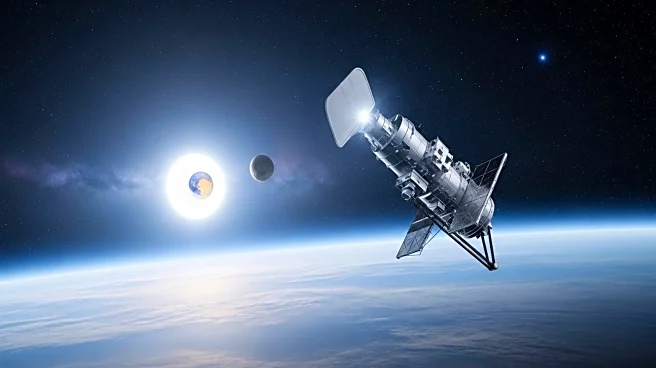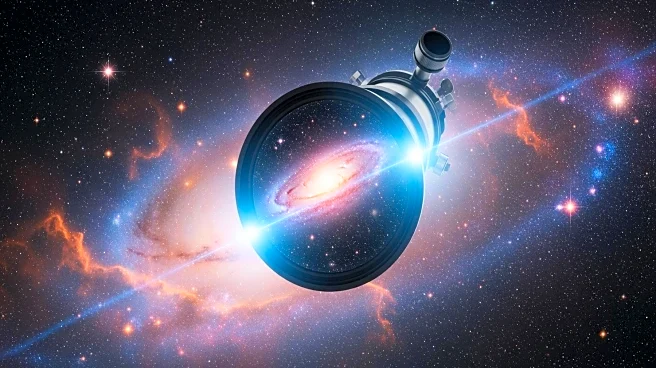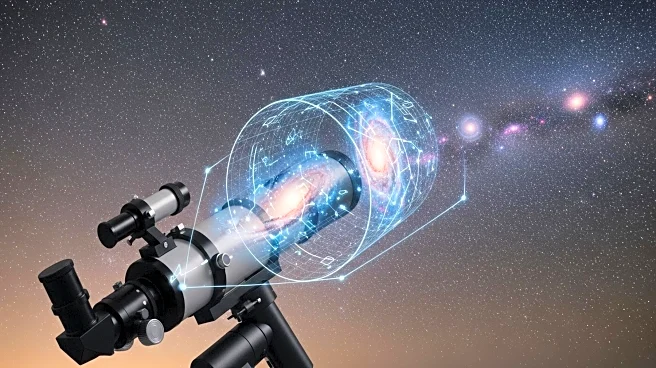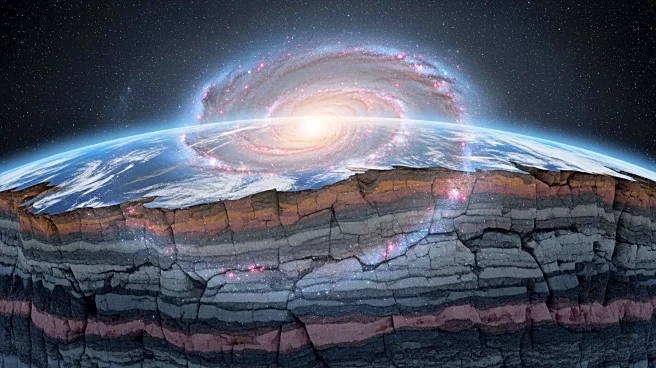What is the story about?
What's Happening?
NASA's James Webb Space Telescope has provided new insights into the Sagittarius B2 molecular cloud, the largest and most active star-forming region in the Milky Way galaxy. Utilizing its NIRCam and MIRI instruments, Webb has captured detailed images of massive stars and cosmic dust in near and mid-infrared light. The images reveal areas where stars are forming inside dense clouds, which block their light, and show the warm dust surrounding young stars. This discovery is significant as it offers unprecedented detail into the processes of massive star formation, particularly in regions close to the supermassive black hole at the galaxy's center.
Why It's Important?
The findings from the James Webb Space Telescope are crucial for advancing our understanding of star formation processes in the galaxy. By providing detailed images of the Sagittarius B2 molecular cloud, scientists can study the conditions that lead to star formation and the role of cosmic dust and gas. This research could lead to new insights into the lifecycle of stars and the dynamics of galactic centers, potentially impacting theories about galaxy evolution and the formation of celestial bodies. The ability to observe these processes in such detail is a testament to the capabilities of the Webb telescope and its contribution to astrophysics.
What's Next?
Further research will focus on analyzing the masses and ages of the stars within the Sagittarius B2 molecular cloud. Scientists aim to understand whether the star formation has been ongoing for millions of years or if it was triggered by recent events. The data collected by Webb will be used to refine models of star formation and explore the interactions between stars and their surrounding environments. Continued observations may also reveal more about the influence of the supermassive black hole on nearby star-forming regions.
Beyond the Headlines
The discovery of the Sagittarius B2 molecular cloud's star-forming activity highlights the importance of infrared astronomy in uncovering hidden aspects of the universe. The ability to penetrate dense cosmic dust and gas with infrared light allows astronomers to study regions that are otherwise obscured. This capability opens new avenues for exploring the universe's most enigmatic phenomena, such as black holes and dark matter, and underscores the need for continued investment in advanced space telescopes.
AI Generated Content
Do you find this article useful?
